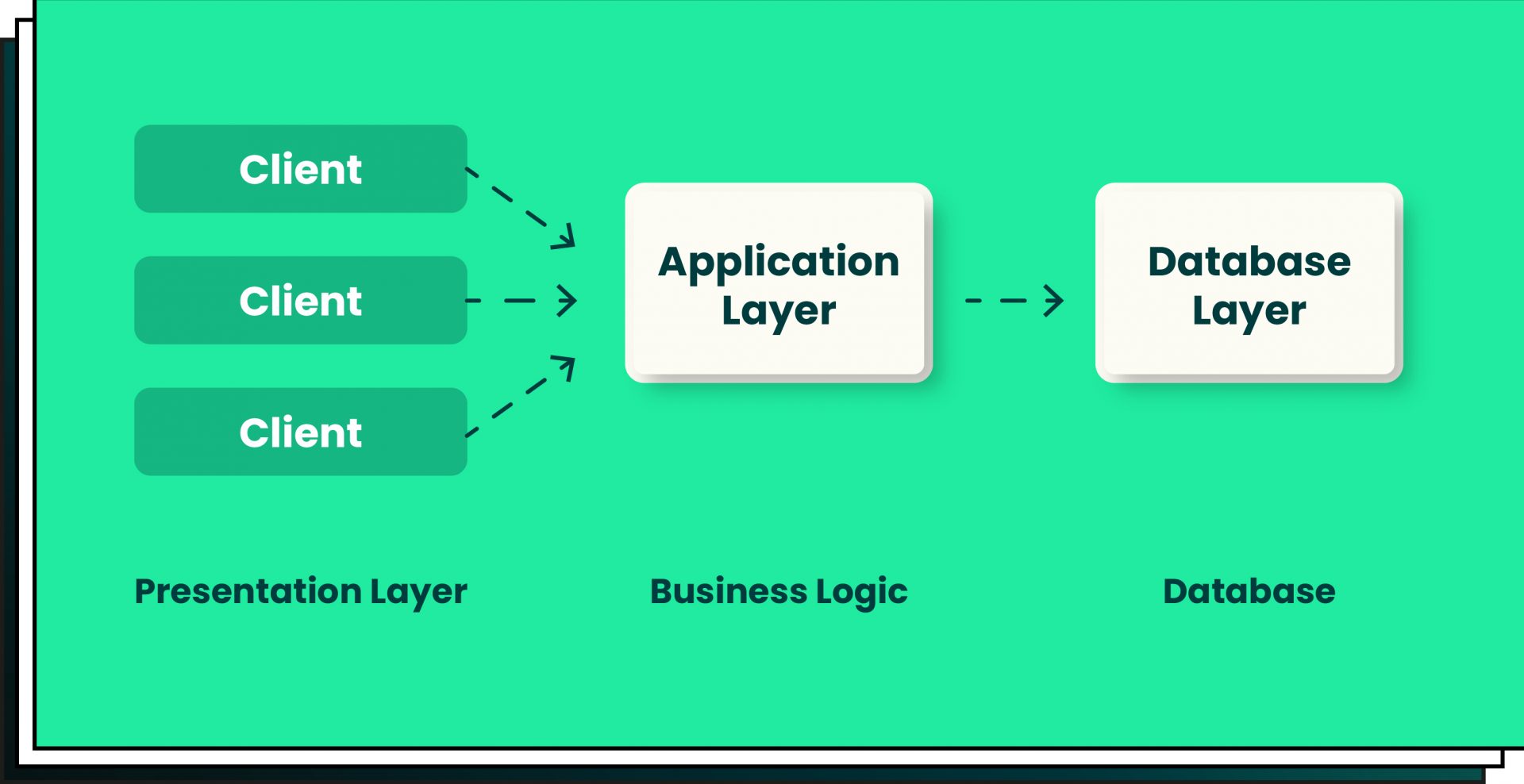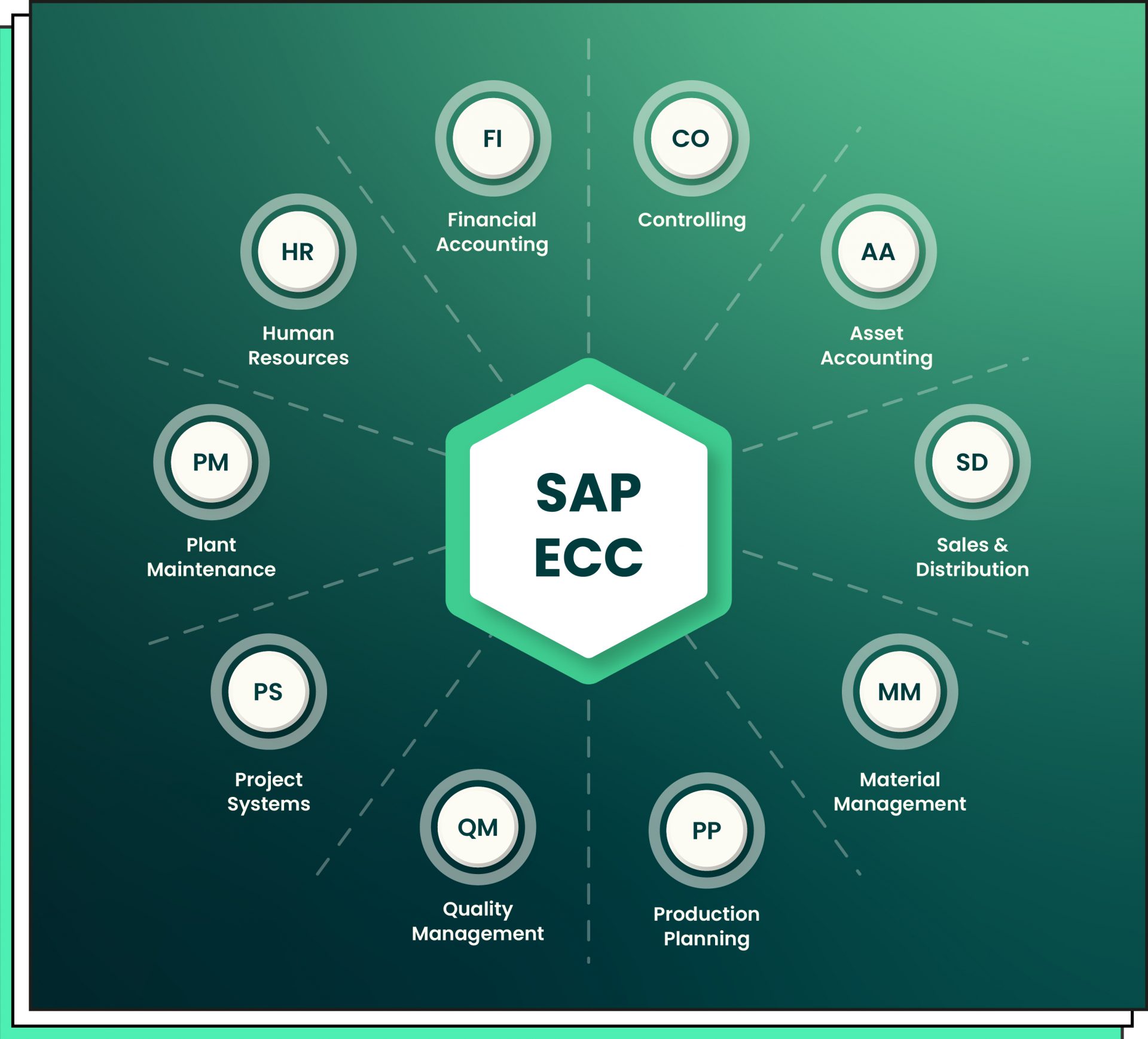“A man who does not plan long ahead will find trouble at his door,” said Confucius. We can’t reject this claim, but we have something to add. At Forbytes, we firmly believe that a company that fails to plan its resources is doomed to project collapse.
Sounds a bit apocalyptic? But no worries! We know the solution that not only assists in resource planning but also drives business process improvement. This is SAP ECC, an enterprise resource planning system (RPS) that is necessary for your business if you care about resource and project management and enterprise analytics.
The implementation of SAP ECC is a challenging process. It requires specialized expertise, relevant resources, and thorough testing. What’s more, if your business processes are poorly designed, SAP will be an issue rather than a solution.
Luckily, you’ve come to the right place. In this article, the Forbytes team is going to talk about what SAP ECC is and show how to use it with maximum benefits for your business. Hopefully, this info will lead you in the right direction.
What Does SAP ECC Stand for?
Before diving into details about the architecture and the use of the resource planning system, let’s focus on its meaning. SAP ECC stands for SAP Enterprise Resource Planning Central Component. This software was developed by SAP SE and still maintains its popularity. This happens because the system can centralize data, making it easy to access across various departments.
Companies opt for SAP ERP Central Component because it makes sales processes simple and speeds up data migration and final product delivery. The system is widely used to enhance decision-making, improve efficiency, and streamline operations. What’s more, SAP ECC is also a robust project management solution that gives tools for getting better at projects.
Components and Architecture Overview of SAP ECC
To understand ECC SAP and see how to integrate it with benefits for your company, let’s focus on its main components and architecture. This information will help you better use and customize the system.
Main components
SAP ECC is one of the most complex software solutions, but this is also its strength, allowing it to handle many processes. So, let’s focus on the system’s key components.
- SAP ERP Central Component. It’s the core module of the SAP system, granting the integration of diverse functionalities and businesses. The key modules of SAP ERP Central Component include Sales and Distribution, Supply Chain Management, Materials Management, Controlling, and Financial Accounting. We’ll discuss them a bit later.
- SAP NetWeaver. It’s a technology platform that ensures the interaction and integration between SAP and non-SAP systems. As a result, it makes the flow of information and processes easy and seamless.
- Database and Operating System. ECC SAP can run on different operating systems and databases. That’s why it’s flexible and allows companies to choose what best fits their infrastructure and business needs.
Architecture
SAP ECC has a three-tiered architecture built in the Business Logic Layer, Presentation Layer, and Database Layer.
The presentation layer presents information to users and receives user inputs. As it includes the UI, it allows users to interact with the system.
The business logic layer or application layer contains application servers and business logic. This layer’s main job is to run programs, process transactions, and manage interaction between the presentation and database layers.
The database layer ensures the integrity and accessibility of the information used by the SAP system. Its key function is to store and manage data.
Such a structure proves the system’s complexity. But the value of three-tiered architecture is that it speeds up development by allowing different teams to work at the same time. As a result, a company can deliver its app to the market faster. At last, scalability is the cherry on the cake as any tier can be scaled independently.
Unique Features of SAP ECC
ECC SAP is a strategic and smart resource planning system that helps businesses take big steps toward digitalization. The following features characterize this software.
First, this system is safe and reliable. It ensures the protection of sensitive data and secure access. What’s more, it is possible to boost its security to avoid unnecessary risks.
Second, the SAP ERP Central Component is scalable and flexible. As it was mentioned earlier, the three-tiered architecture allows expansion and reduction in size, volume, the number of users served, and more.
Third, this software is customizable to fit specific business needs. But be careful, as over-customization can make updates and maintenance challenging. Just feel like enough’s enough, and personalize the system to bring benefits to your company.
Fourth, SAP ECC is a real-time processing software. It means that the system can process and update data instantly, allowing smart data integration. As a result, with a stable and real-time data pipeline, you can build a powerful ecosystem to identify gaps in your processes.
Finally, ECC SAP is an automated system that integrates business functions and processes. Automation enables operations to run smoothly and assists in making data-driven decisions. As a result, the company can enjoy enhanced productivity and efficiency.
Major Functional Modules of SAP ECC
SAP ECC is based on modules responsible for handling specific business processes or tasks. The system consists of ten core modules, but you don’t need to implement all ten. Just opt for those aligning with your needs. Let’s discuss all of them to see what will fit you the best.
Financial accounting (FA)
This module is one of the most popular components of SAP ECC as it is used to store the financial data of the company. It can record all your transactions, allowing you to keep them neatly organized and manageable.
Controlling
The controlling component handles internal processes and accounting. This module can also be helpful in financial planning as it can assist you in comparing costs and making more effective financial decisions. In some cases, it is possible to lump accounting and controlling components to access more opportunities.
Materials management (MM)
MM component of SAP ECC is responsible for procurement and inventory tasks. Since companies usually get materials from both local and global vendors, this module assists in tracking the inventory and supply chain management.
Sales and distribution (SD)
This module can provide you with tools to handle sales and distribution aspects. For example, you can use them for processing customer returns and billing. This component is valuable because it handles product or service sales in both national and global markets, extending the scope of your sales operations.
Production planning (PP)
This module of SAP ECC offers tools that help companies align production capacity with customer needs. The strength of this component is that it allows accurate demand forecasting using business data.
Quality management (QM)
If product quality is your top priority, then the QM module is a must for your company. It can assist you in finding causes of product failure, making this procedure fast and cost-efficient. This component is crucial when there is a need for integration with production, sales, and materials.
Customer services (CS)
This module is very valuable to companies specializing in service and maintenance. CS component allows businesses to schedule their maintenance and bill customers.
Project system (PS)
This SAP ECC module should be used for handling large, complex projects as it covers everything from getting materials to production costs. This component can ensure that you stay on the project timeline and budget.
Plant maintenance (PM)
This module is responsible for operational efficiency and ensures everything is running properly. When there are some issues or a need for maintenance, the PM component can send alerts to prevent disruption of your business processes.
Human capital management (HCM)
This component of SAP ECC handles all human resource-related needs, contributing to the efficacy of HRM. For example, it handles employee training, holiday schedules, time off, and other things related to employees’ needs and benefits. This module is particularly essential for large companies as it simplifies HRM.
So, the thing we’re trying to say here is that you can pick up the most relevant modules of SAP ECC, responding to your business needs. Just define your pain points and use the system’s components to address them.
Integration with Other SAP Solutions
One of the advantages of SAP ECC is its capacity to integrate with other SAP solutions. This is a great chance to strengthen the system’s features and get extra benefits for the company. So see what solutions can be easily integrated with resource planning software.
SAP Customer Relationship Management (CRM). Integrating this CRM system with SAP ECC will assist in managing customer relationships and ensuring a consistent flow of data. What will you get from this integration? First, you can synchronize customer data in real time. Second, this is a chance to enhance customer experience, responding faster to their requests.
SAP Supplier Relationship Management (SRM). Integration of SRM with the resource planning software is also full of benefits for your business. In most cases, it is relevant when it comes to increasing visibility into the supply chain and streamlining the procurement process. This is a good chance to centralize the process of getting materials from vendors, streamline supply chain management, and ensure a better decision-making process.
SAP Business Warehouse (BW). Integrating this system with SAP ERP is relevant when there is a strong need for analytics. SAP Business Warehouse allows real-time reporting and better decision-making.
Now you know how to enhance your SAP ECC with additional integrations. But mind, please, that the integration approach is specific and depends on the version of your SAP solution and the business requirements of your company.
How Businesses Can Benefit from SAP ECC
Did you know that many global companies, like Apple, Amazon, Walmart, and Burger King, use SAP to take control of business processes and make more intelligent decisions? It’s quite a common practice for many industry giants to make better use of resources and time, if this comes as a surprise to you.
What’s more, companies that use SAP ERP get truly amazing advantages that help them stay more efficient in business processes. Let’s see how you can benefit from this software implementation.
Data management and reporting
For companies, SAP ECC is a driving force of progress in data management and reporting. First, they get a centralized platform, contributing to the accuracy and consistency of data across different departments. Second, they can report in real-time, making more informed decisions and responding quickly to changing market trends. Finally, companies have more advanced analytics thanks to ECC integration with SAO Business Warehouse.
Customization and flexibility
SAP ECC makes business processes more customized and flexible. As a result, companies can tailor the system to their unique business needs, organizational workflows, and industry-specific requirements. Then, with SAP ECC, it is possible to adapt to changes faster, becoming more dynamic and responding to evolving market conditions. Finally, such an option of ECC as customization of the user interface allows for making it more user-friendly and aligned with specific requirements.
Project management
What makes SAP ECC so popular is its ability to enhance project management and make it more efficient. First, the system offers PM tools for planning, executing, and monitoring projects. Second, the capacity of ECC SAP to integrate with other systems ensures that project-related activities align with all business processes. As a result, you’ll get improved teamwork and better project outcomes.
Implementation Challenges and Best Practices
Implementation of SAP ECC is a challenging process that requires special skills and expertise to use the system’s functionality and not to bring harm to a company. So let’s focus on challenges to be prepared for them.
The process of SAP ECC launching is associated with the following obstacles. First, data migration can be a complex task as it is necessary not only to move data from legacy systems to SAP ECC but also to ensure accuracy and consistency. Then, it’s difficult to customize the system without making it very complex. So over-customization can play a cruel joke on you by hindering future upgrades. Finally, you may deal with the dilemma of resistance to change, as not all employees are ready to adapt to new technologies.
Despite these pitfalls, following best practices is a good idea to make the implementation process less painful. So, comprehensive data migration planning is needed to define clear goals and understand what resources should be used to achieve them. Then, a thorough business process analysis is recommended to reveal areas that should be optimized.
At Forbytes, we have an on-point story to tell. Our client wanted to plan out, implement, and fully manage the process of data migration from different data sources to a secure place. They faced a challenge because they couldn’t analyze their data effectively due to the lack of a unified place for storing it. Forbytes solved this problem and migrated the data to the unified serverless warehouse. Now, our client can easily manage and analyze their business data, making it accessible for BI systems.
Future Trends and SAP’s Strategic Direction
What inspires us the most about SAP ECC is that this system is moving in a strategic direction, incorporating the latest trends. Let’s discuss the latest integrations and improvements of this software.
Robotic Process Automation (RPA)
RPA is one of the popular integrations in SAP automation. It is popular as it allows one to automate routine tasks and focus on more strategic work. As a result, the integration of SAP ECC with RPA makes the system more advanced and contributes to higher efficiency and productivity.
Cloud-based automation
SAP system also uses all possibilities of cloud-based automation, moving its operations to the cloud. Such an option offers greater scalability and flexibility and reduces costs. What’s more, many businesses migrate to the cloud. That’s why SAP ECC meets the evolving needs of businesses as well.
Integration with AI and ML
It is expected that SAP ECC will integrate with AI and ML to better automate business processes, reduce routine tasks, and enhance the decision-making process. With the help of ML and AI, this resource planning software can become more accurate, efficient, and intelligent. See how to use Big Data and AI together to produce powerful solutions.
For example, if integrating the SAP ECC system with AI-powered chatbots, it is possible to provide real-time customer support. The use of ML algorithms can better predict demand and assist in operational optimization. So, very soon, SAP will handle and process very complicated tasks with ease.
Final Thoughts
All in all, SAP ECC is a powerful tool for planning resources, supply chain management, business process optimization, and project management. So when you are looking to implement it, you have to understand your needs to pick up the modules that meet your project requirements.
At Forbytes, we help clients implement the SAP ECC system and relevant modules, seamlessly integrating with other SAP solutions. What’s more, we can enhance project management with the SAP project system. If you want to deal better with resource planning and project management, feel free to email us. And we’ve got you covered.











